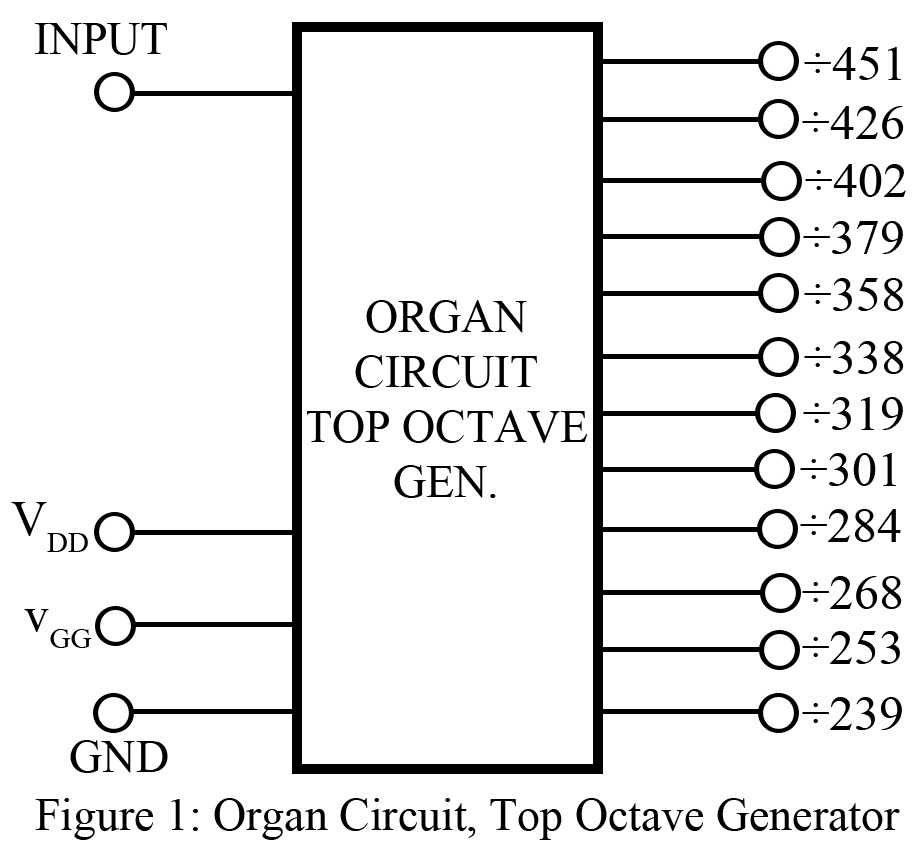If you have observed quite a number of electronic projects, you must have noticed that different range of frequencies is used, sometimes all in a single project. To assist this requirement, this circuit “Organ Circuit” has been developed. The project entitled ‘Organ Circuit | Top-Octave Generator’ produces 12 distinct output frequencies.
A single circuit produces 12 frequencies and each of them is different? Might sound a lot more complicated. However, the circuit uses only one parameter to serve this variation, which is the supplied input frequency to the chip. The frequency fed to the chip is counted down by an exact integer to form a chromatic scale of 12 notes.
It can be thus said the type of octave generator or the output of the generator solely depends on the input frequency. This circuit is digitized and makes uses of digital counters to produce pulse trains. The ratios of the output to input frequency match up to the tones of the chromatic scale. In musical equipment’s, the output pulse trains are usually converted into sine waves in the audio amplifier section for desired sound effect.
The basic key parameters of Organ Circuit | Top Octave Generator are enlisted in points below:
- Input frequency range: – The input to the circuit ranges from 250 kHz to 2.5 MHz in general.
- Input capacitance: – The inherent capacitance of the input terminal is about 5 pF.
- Input pulse width: – It is the minimum width of the input pulse that the IC can accept. And 0.2 µs is the pulse width limit.
- Output pulse rise and fall time: – These parameters represent the output characteristic. In no load condition, 1 µs is typical value.
Applications of Organ Circuit | Top Octave Generator
The core application of this project is in electronic organs, electronic music synthesizers, and other electronic musical devices where the need of multiple range of frequency is needed.
Comments on Organ Circuit | Top Octave Generator
In order to achieve the equal tempered scale effect instead of chromatic scale, use only exact replacement ICs.

One gripe that I’ve had with many electronic organs is not the absolute accuracy of individual notes on an evenly-tempered scale, but the inaccuracy of mixtures (in the organ sense) in voicing. While the fifth is decent, being only a cent or so off from just intonation, the thirds and sixths are way out of whack. Using those in mixtures is very jarring.
Another is detuned stops, some larger organs would have a 2nd TOS to make an unda maris for instance and it wouldn’t sound right since the beat frequency is supposed to be constant not the detuning.
Some though would have a 3rd and 5th TOS to address the mixtures issue.
(Source: I’m an old organ tech)